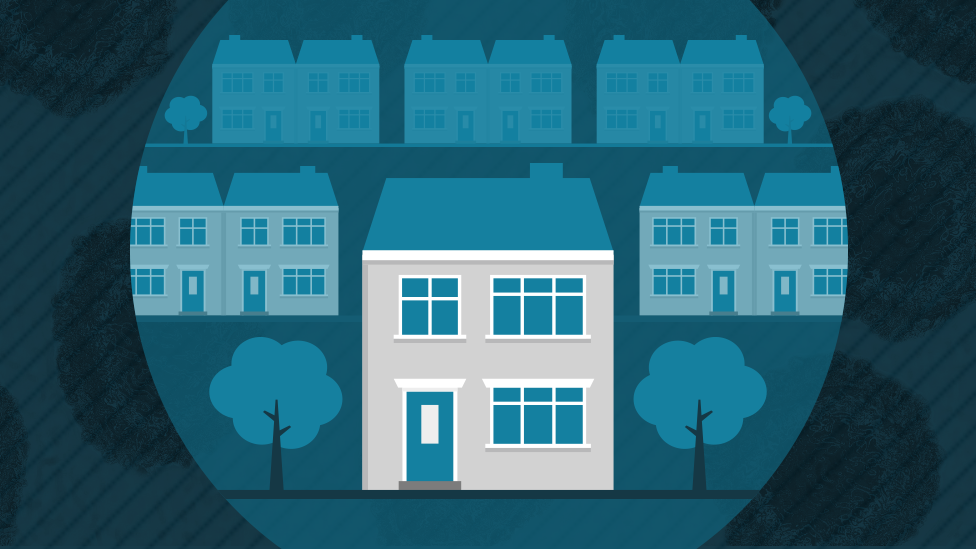Coronavirus: England's hotspots in maps
- Published
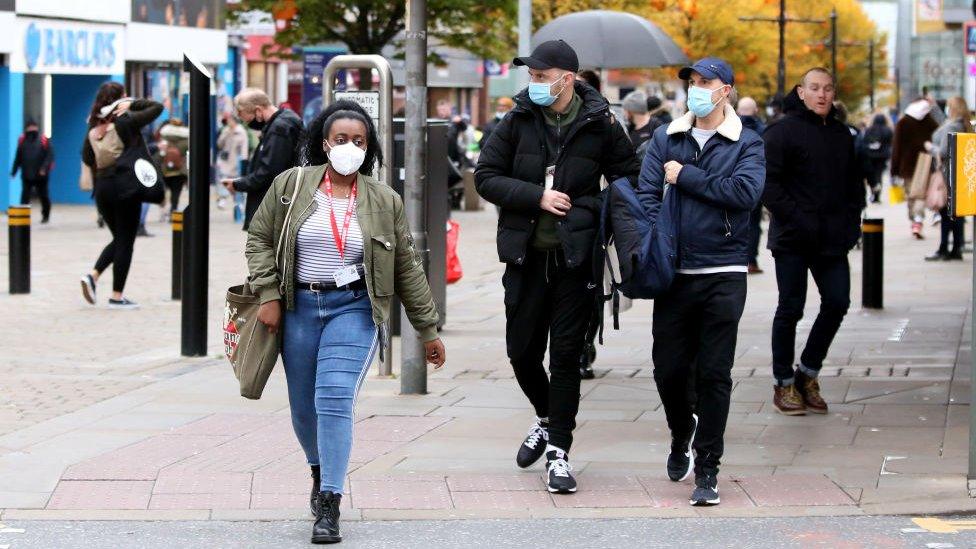
Several areas of Greater Manchester are seeing some of the highest coronavirus infection rates
As coronavirus infection rates continue to rise, BBC News has mapped some of the areas with the highest numbers of new infections.
It comes as England faces going into a second national lockdown on Thursday.
In the week to 1 November, England had 228.5 cases of coronavirus for every 100,000 people. This is the equivalent of about 1 in every 437 people contracting the virus that week.
The rate of infection varies from area to area, and within larger council areas are smaller neighbourhoods with an average population of about 7,200.
The latest data available on new cases in these smaller areas is for the week to 30 October.
Greater Manchester was placed into tier three - very high alert in late October by the government, despite opposition from local leaders.
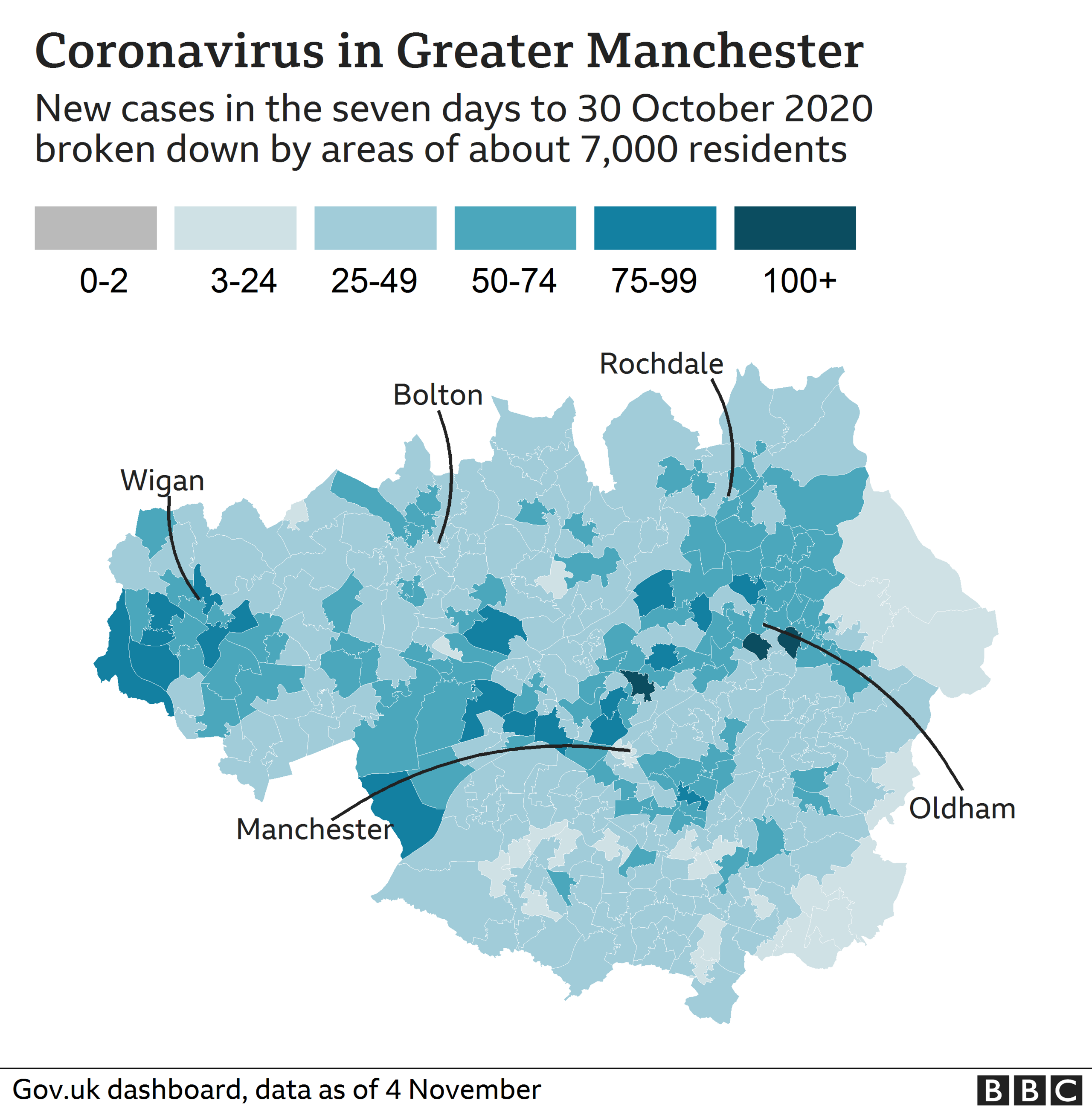
Currently, seven of the region's 10 councils are in the top 10 areas with the highest infection rates in England.
Oldham currently has the highest rate, with 737 cases per 100,000 people, up from 694 the previous week.
In September, public officials and universities in Manchester had to tackle a surge in cases, thought to be driven by the return of more than 70,000 students to the city.
Mass testing was deployed, and by mid-October the focus shifted from student halls of residence, to neighbourhoods where older students lived.
Across the wider region, two areas of Oldham had the highest number of cases, Werneth with 113 in the week to 30 October, followed by Alexandra Park with 108.
Manchester recorded 100 cases in the Crumpsall South area across the same period.
Lancashire was the second area to enter tier three.
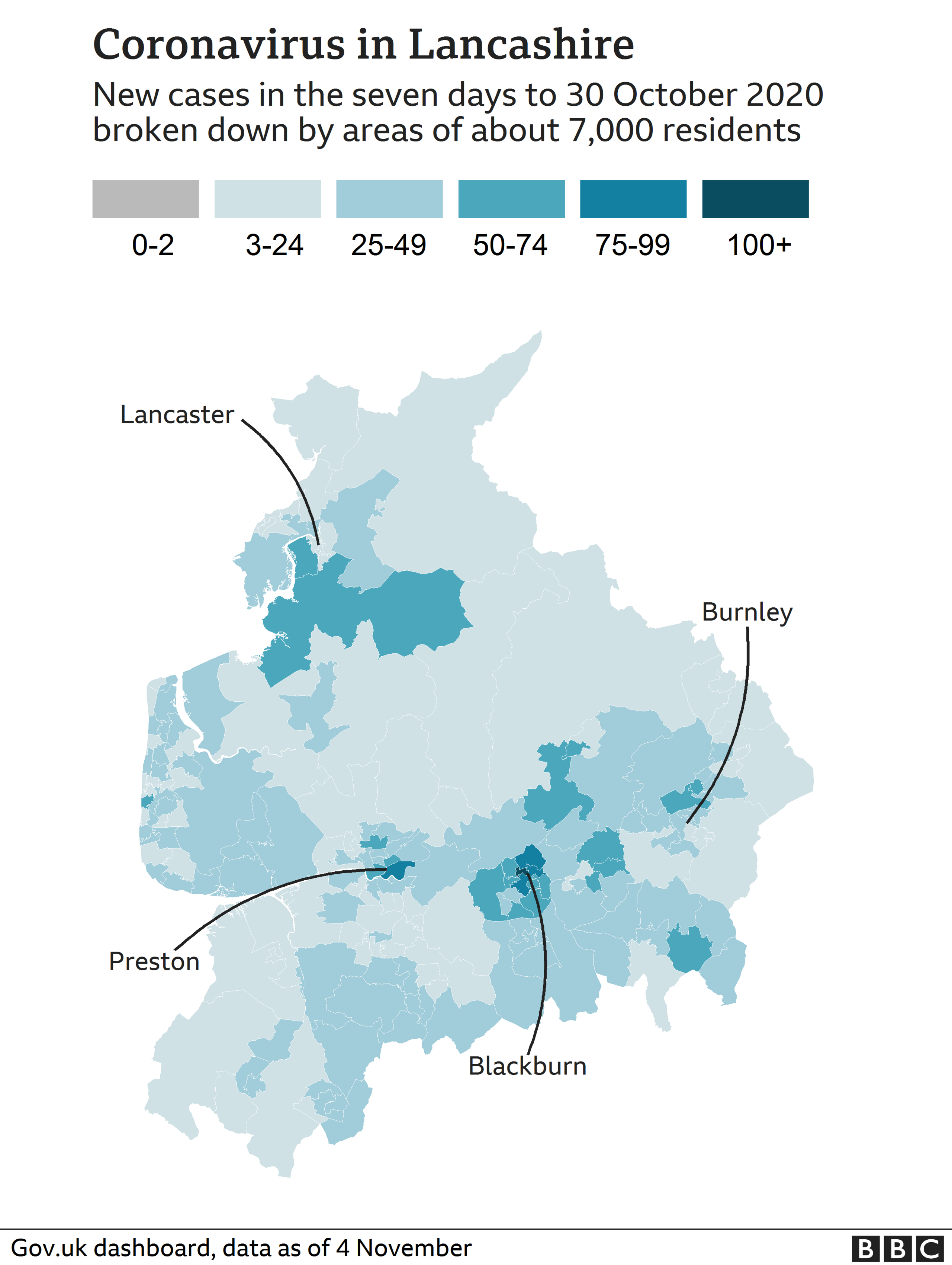
Blackburn with Darwen currently has the second highest infection rate in England, at 688 per 100,000 people.
The impact of this can be seen on a neighbourhood level, with three areas in Blackburn with Darwen recording the most infections in the week to 30 October.
Bastwell recorded 126 positive cases, followed by Roe Lee, Brownhill and Sunnybower, with 98, and Little Harwood, which saw 86.
Looking ahead to the national lockdown, the leader of Blackburn with Darwen Council, Mohammed Khan said: "I think this lockdown will have a devastating effect on our local economy, but with infections rates going up I think the government had to do something."
Mr Khan added it was possible the lockdown was "a couple of weeks too late" and expected some parts of the wider county to be in "at least tier 2" at Christmas.
Three of South Yorkshire's four council areas, Doncaster, Rotherham and Barnsley currently sit in the top 20 areas with the highest infection rates.
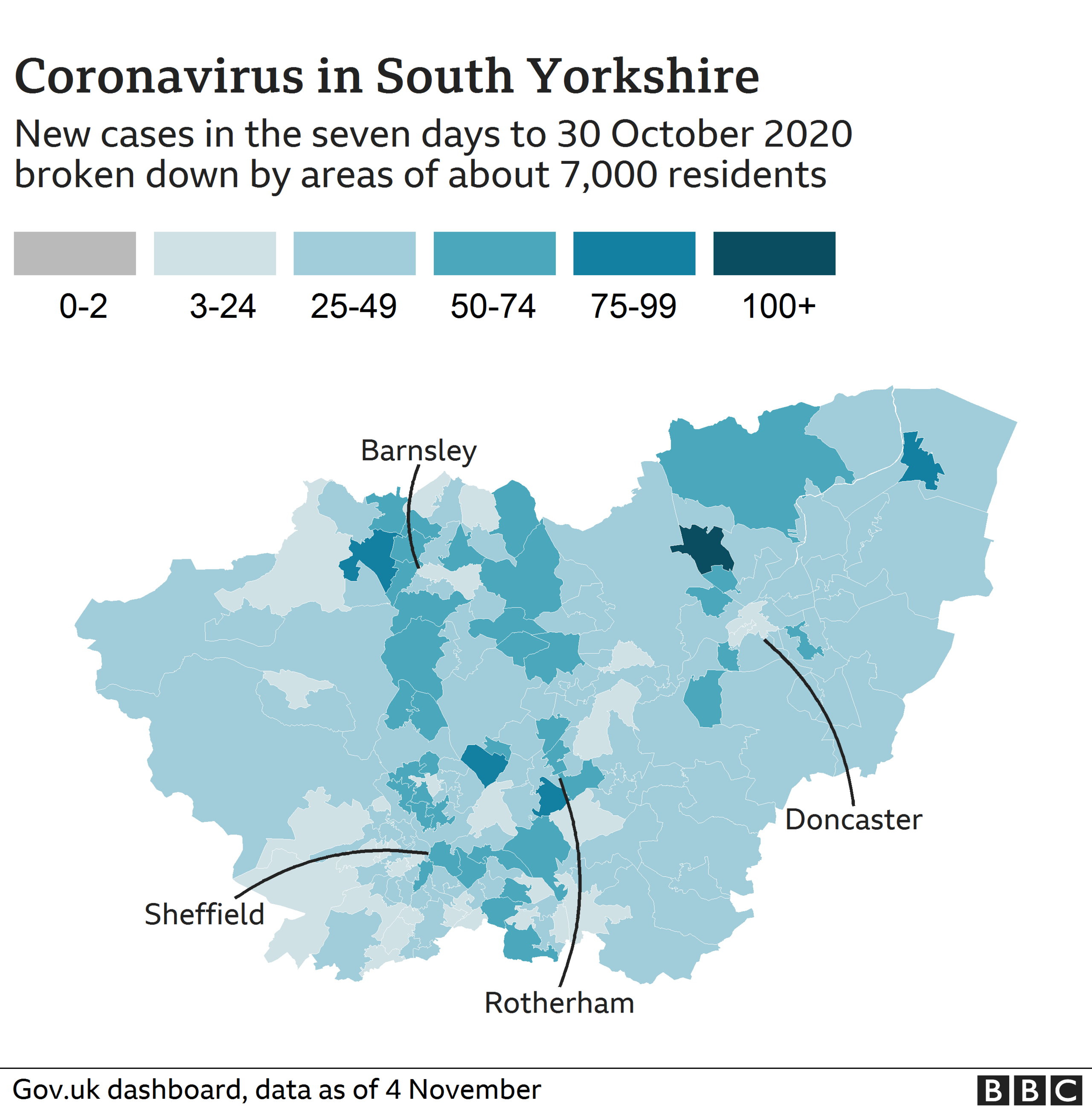
The whole area was placed into tier 3 in late October, just after Greater Manchester.
Adwickle Street and Woodlands, in Doncaster, saw the most cases in the area across the week to 30 October, with 116, followed by Thorne, with 94.
A part of Barnsley, Wilthorpe and Barugh Green, recorded the next highest with 83 cases.
Dr Rupert Suckling, director of public heath at Doncaster Council, said: "The situation is still very serious and I cannot emphasize that enough."
Before the national lockdown was announced, he asked residents to go "above and beyond" tier 3 restrictions, urging people to "stay in Doncaster" to control the spread of the virus.
West Yorkshire was spared a tier 3 lockdown only because the national one was announced.
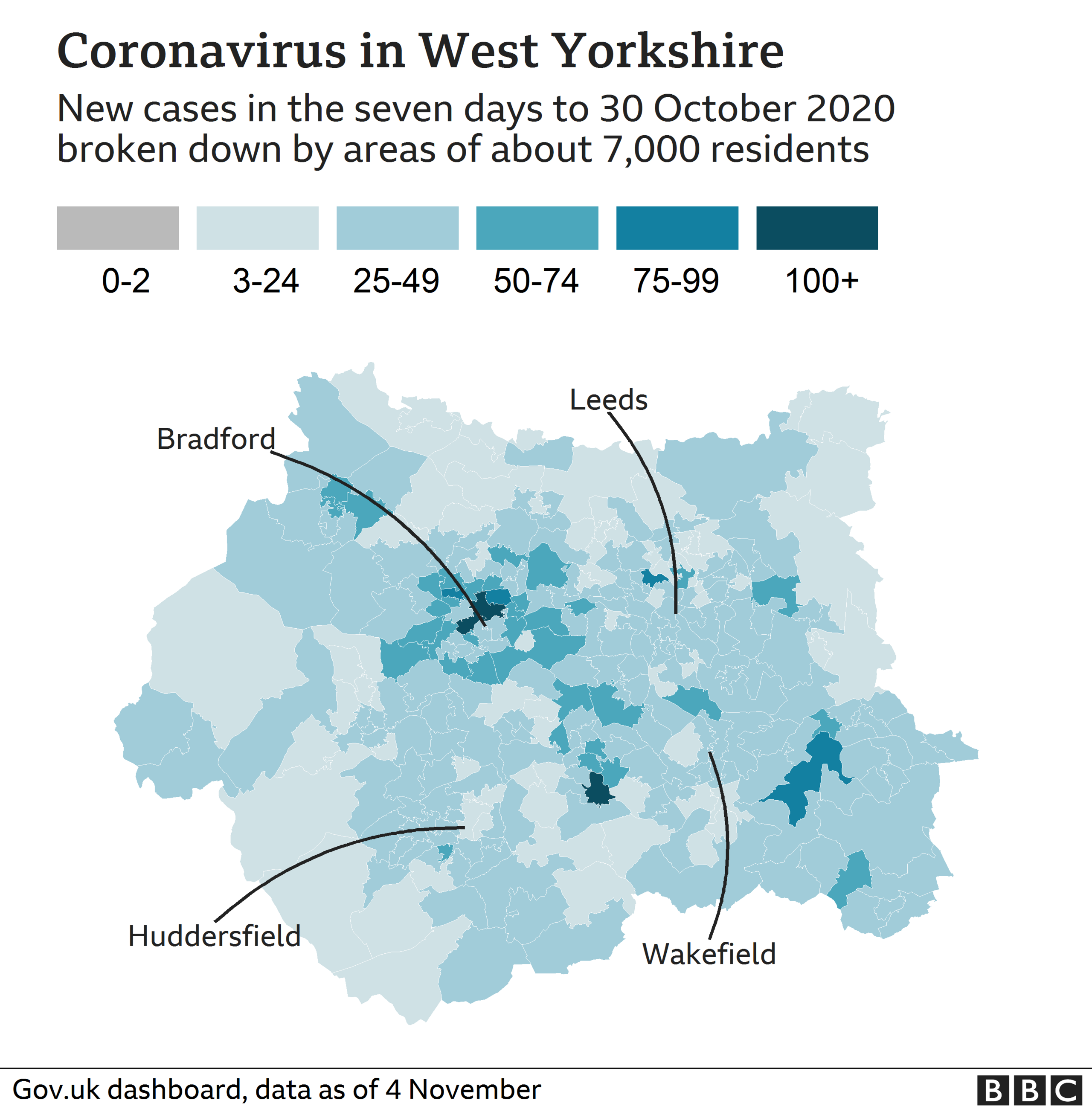
The area was due to see tightened restrictions on Monday 2 November after "rising rates" of coronavirus.
Leeds City Council's director of public health, Victoria Eaton, recently said the rate of infection in Leeds had dropped off in younger people, but was increasing elsewhere.
"We are seeing increases in over 65 age groups - which is a warning for hospital admissions," she said. "We must limit the spread from younger to older adults."
Dewsbury Savile Town and Thornhill Lees, near Huddersfield - part of Kirklees - recorded the most cases in the area, with 115.
Central Bradford and Barkerend West - Bradford - saw the next most, with 106 cases in the week to 30 October.
Is anywhere free of Covid-19?
England is divided into 315 local authority areas when recording coronavirus figures.
In the week to 1 November, everywhere had at least one positive case.
Rutland had the lowest number, with 28, but North Norfolk had the lowest number of cases per 100,000 people, at 28.6 - due to Rutland's smaller population.
What are the new rules for England?
Under the government's tiered system, of the 315 areas of England there are 43 areas in tier three - very high alert - 102 areas in tier two - high alert - and 170 in tier one - medium alert.
From 5 November until 2 December, all authorities in England will come under the national lockdown, overriding whatever tier an authority was in.
When announcing the new measures, Prime Minister Boris Johnson said after 2 December national restrictions would be eased and regions would go back to the tiered system.

Data was taken from the government's coronavirus dashboard, external figures by local authority and middle layer super output areas (MSOAs).
Figures for local authorities are as published on 1 November. MSOA data is based on the rolling total specimens taken in the week to 30 October.
Additional reporting: The Local Democracy Reporting Service

SOCIAL DISTANCING: How have rules on meeting friends changed?
SUPPORT BUBBLES: What are they and who can be in yours?
FACE MASKS: When do I need to wear one?
TESTING: How do I get a virus test?

- Published3 November 2020
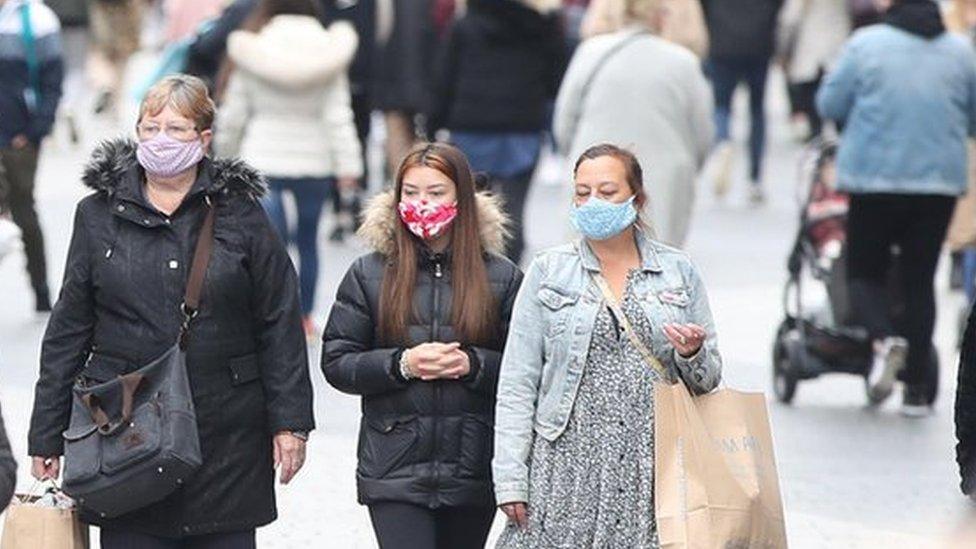
- Published5 July 2023
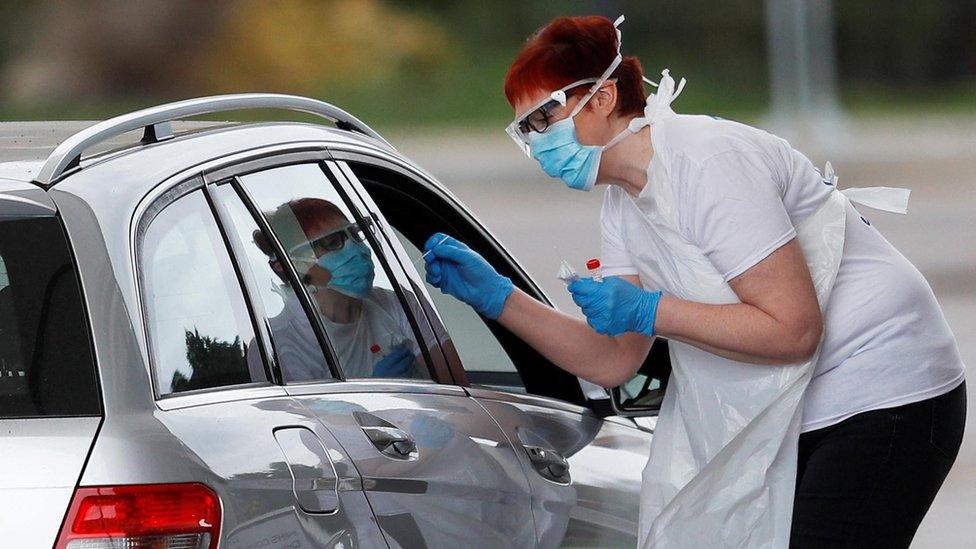
- Published26 January 2022
